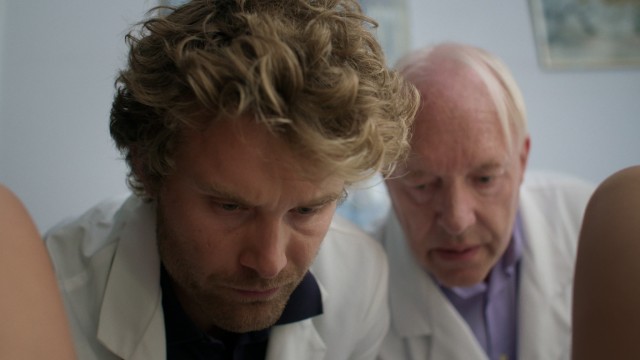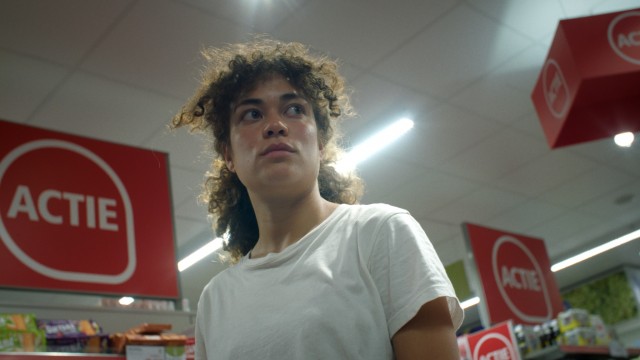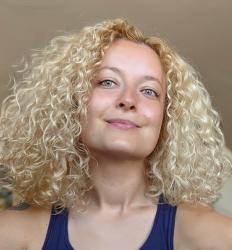It’s a well known fact that medical science has a bit of a gender problem. Here, in the UK, there is five times more research into erectile dysfunction, which affects 19% of men, than into premenstrual syndrome, which affects 90% of people with a uterus. In fact, most of our understanding and treatment of ailments comes from the perspective of men, based on studies of men (and male animals), and carried out by men, while female hormones have been sidelined and stigmatised for centuries. Today, pre-teens are prescribed hormonal contraception as early as they hit puberty, long before they are sexually active, despite the detrimental effects those could have on their physical and mental health.
Inspired by her own personal experience and that of three other women, Pien Van Grinsven’s Hormonal uses the medium of dance to bring to light the invisible side effects that hormonal birth control can have on people. The twenty-two minute documentary observes a spectrum of physical and psychological effects and if you, like me, have used hormonal contraception at some stage in your life, the narrative will undoubtedly resonate. Hormonal is an evocative and intelligent piece of storytelling that enlightens with its authentic insights and mesmerises with its visual language of movement, all powerfully observed through the female gaze.

“Although it seems common knowledge that hormones impact us, there hasn’t been any real change in how they are prescribed to (pre)pubescent girls.” – director van Grinsven discussing the topic of her film.
We never see the women whose words form the script. Instead, their voices are embodied by the utterly captivating actor/dancer Bodine Sutorius, who also took on the role of choreographer in the film. These take place in the most unglamorous locations – in the bathroom, at the supermarket, on the bedroom floor – pointing to the fact that the side effects that are often felt – from loss of libido and energy, to mood swings, physical discomfort and depression – can occur anywhere and at any time.
“I see the film as standing on its own, but also part of a larger framework to start to really talk about this practice”
“After one chat with the doctor, I used hormonal contraception for over 12 years: from the age of 15 to 28”, Van Grinsven shared with S/W. “I got to know myself as someone who is always low-level depressed until I stopped taking hormones. Within a month, not only did the intensely black thoughts disappear, but eventually also the low-level depression that I thought belonged to me. And I realized that we talk too little about this. Although it seems common knowledge that hormones impact us, there hasn’t been any real change in how they are prescribed to (pre)pubescent girls. I see the film as standing on its own, but also part of a larger framework to start to really talk about this practice.”
I have personally been on various types of birth control for 19 years and counting. Over this time, I went through three back-to-back contraceptive implants which meant that I didn’t have a period for 9 years – which was fucking brilliant. What was less brilliant was that my sex drive had also apparently decided to abandon ship and instead of feeling horny for my beautiful partner, I was mostly irritated by him and the rest of the world. With this in mind, while watching Hormonal, I felt a distinct sense of deja vu as parts of the script hit very close to home. At the same time, the film also felt refreshingly unique, thanks to Sutorius’ portrayal of the women’s physical and emotional experiences.

Bodine Sutorius’ dance performances are the highlight of this captivating and informative short
Van Grinsven and Sutorius worked together to interpret the women’s testimonials into scenes that transmitted their emotions. “We spent hours and hours trying to re-embody experiences that were felt in another body, hoping to make them universal in the film” – the director explained. “Bodies respond to each other more than to words: when your body tenses, mine responds. Bodine did not only take up the role of choreographer, but also of all characters at the same time, carrying all the stories in the film.”
The dancer’s virtuoso use of her body – the way she inhabits space, drops like a stone, and pulls and tugs at her flesh as if she can’t bear being trapped in it – is one of the most crucial elements in the story. The dance in the film is far from a mere visual gimmick; it elevates the documentary to a true work of art, leaving a lasting impression that lingers long after the credits roll.

 Serafima Serafimova
Serafima Serafimova